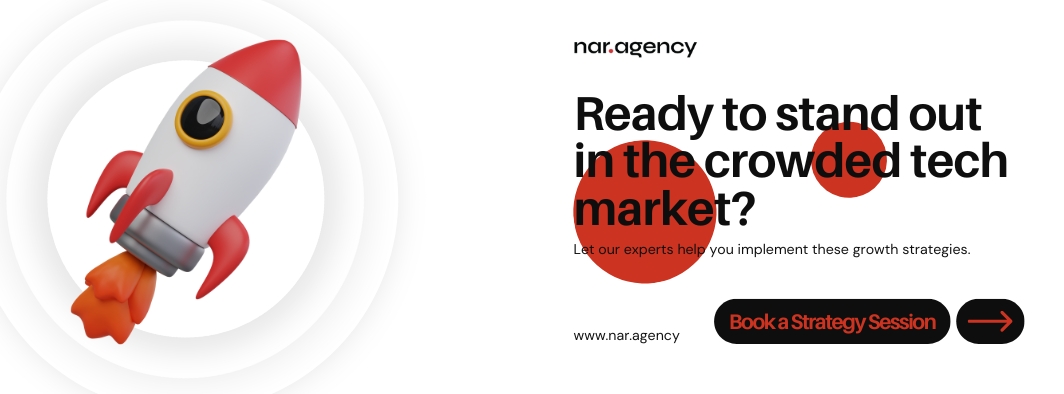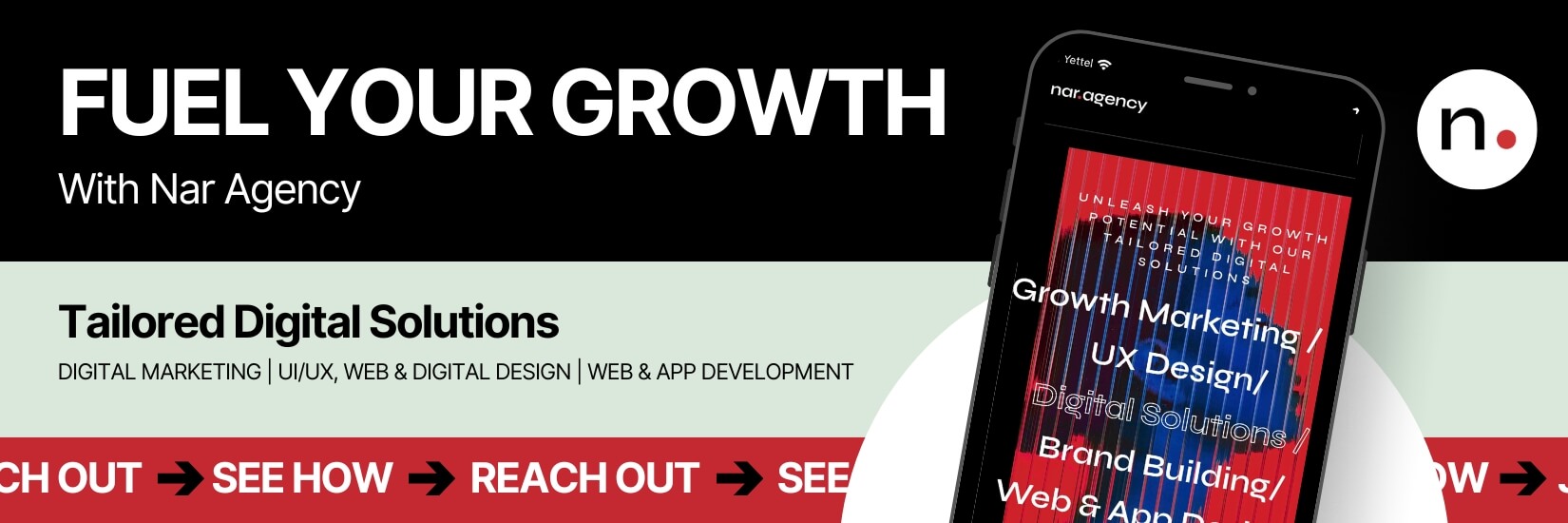Table of Contents
In the fast-paced world of tech startups, conventional wisdom often falls short. The Silicon Valley playbook—raise millions, grow at all costs, and aim for a quick exit—isn’t a one-size-fits-all solution. For small tech startups operating with limited resources and fierce competition, success often lies in charting an unconventional course.
But what does “unconventional” really mean in an industry that prides itself on disruption? It means challenging even the disruptors’ assumptions. It means finding creative ways to compete with tech giants and well-funded competitors. It means growing your startup in ways that might seem counterintuitive at first glance, but could be the key to standing out in a crowded market.

In this article, we’ll explore ten unconventional growth strategies that have helped small tech startups not just survive, but thrive in today’s cutthroat tech landscape. Forget about “move fast and break things” or “growth at all costs.” Instead, prepare to open your mind to ideas that may seem radical, but have proven effective for nimble, innovative startups.
From leveraging the “no code” revolution to grow without a tech team, to embracing the “slow tech” movement in a world obsessed with speed, these strategies challenge the status quo of startup growth. Each strategy is backed by real-world examples of tech startups that dared to be different—and reaped the rewards.
So, whether you’re a solo founder working on your MVP or leading a small team with big ambitions, buckle up. The path to startup growth might not be what you expect, but it promises to be an exciting journey that could redefine your company’s trajectory.
Are you ready to challenge Silicon Valley orthodoxy and explore a new paradigm of tech startup growth? Let’s start.
1. The "No Code" Revolution: Growing Without a Tech Team
Forget what you’ve heard about needing a team of coding wizards to launch a successful tech startup. The rules are changing, and the “no code” revolution is turning conventional wisdom on its head.
For years, the tech world operated under the assumption that without a squad of elite developers, your startup was dead in the water.
Enter the no-code movement – a game-changer that’s rewriting the startup playbook. It’s democratizing tech entrepreneurship and giving the “idea person” a fighting chance against the Silicon Valley coding elite.
Leveraging no-code platforms to build and scale products
No-code platforms are changing the game, allowing non-technical founders to build complex applications without writing a single line of code. Tools like Bubble, Webflow, and Airtable are empowering entrepreneurs to bring their ideas to life faster and cheaper than ever before.
Case study: A startup that reached $1M ARR with zero developers
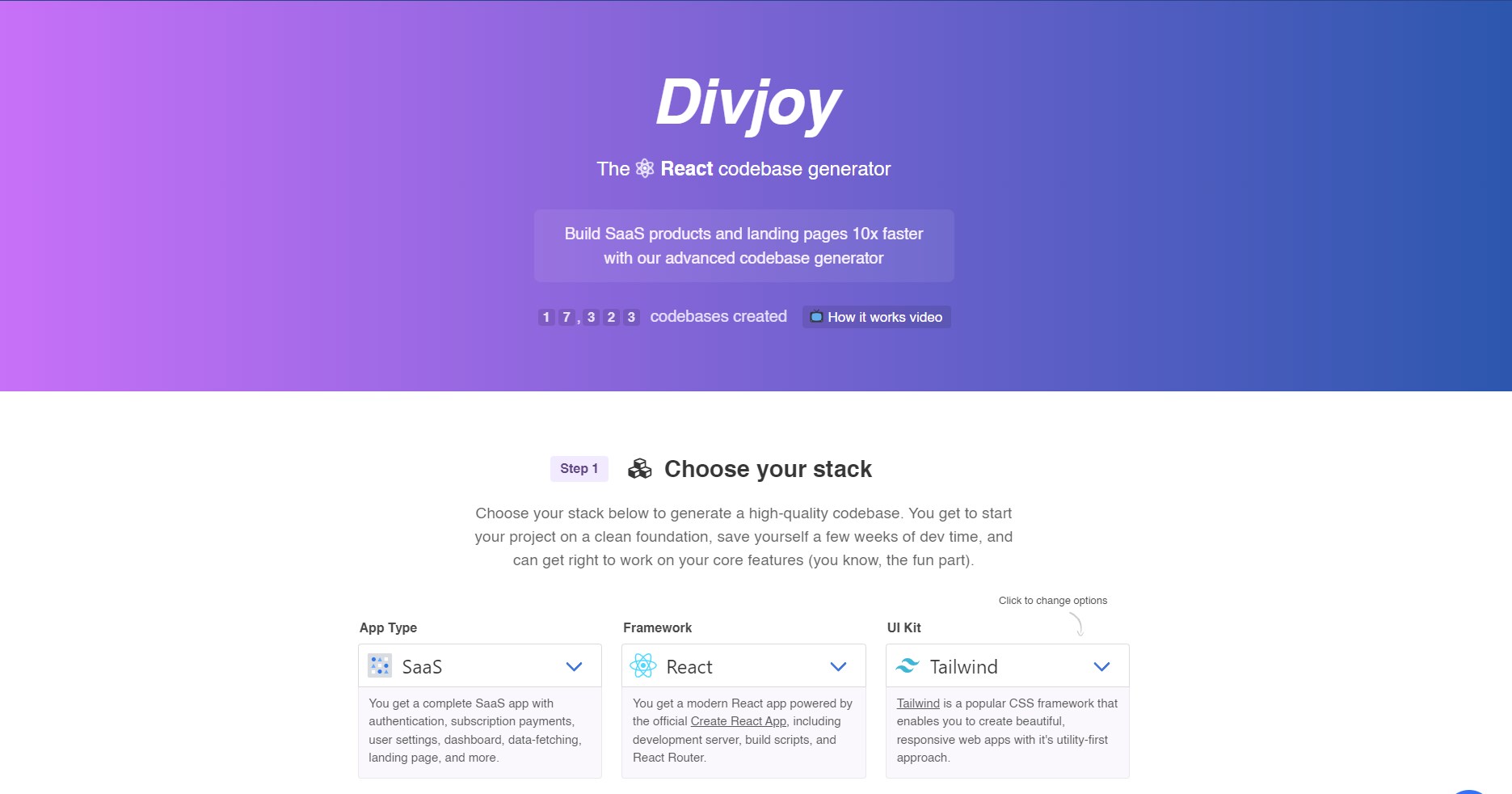
Consider the case of Divjoy, a startup that generates React codebases. Founder Gabe Ragland built the entire product using no-code tools and reached $1M in annual recurring revenue without hiring a single developer. By leveraging tools like Webflow for the website, Airtable for the backend, and Zapier for automation, Ragland was able to focus on product-market fit and customer acquisition rather than technical debt.
How to identify which processes can be “no-coded”
Not everything can (or should) be no-coded, but you’d be surprised at how much can be accomplished without traditional development. Here’s a quick guide:
Start with your MVP: Use no-code tools to quickly validate your idea.
Automate operations: Use tools like Make for backend processes.
Build your website: Platforms like WordPress or Squarespace can create professional sites.
Create mobile apps: Tools like Adalo or Glide can turn your idea into a real app.
Manage data: Airtable or Google Sheets can serve as powerful, flexible databases.
Remember, the goal isn’t to avoid coding forever, but to move fast, validate your ideas, and only invest in custom development when you’ve proven your concept and have the resources to scale.
🛠️ Popular No-Code Tools for Tech Startups
• Bubble: For building web applications
• Webflow: For creating responsive websites
• Airtable: For flexible database management
• Zapier: For automating workflows between apps
• Adalo: For developing mobile applications
• Glide: For creating apps from spreadsheets
• Notion: For all-in-one workspace and project management
• Carrd: For single-page websites and landing pages
• Typeform: For interactive forms and surveys
• Shopify: For e-commerce stores
These tools can help you build, automate, and scale your startup without extensive coding knowledge.
While the no-code movement offers tremendous opportunities, it's important to be aware of its limitations. Complex, highly customized applications may still require traditional coding. Scalability can sometimes be an issue with no-code platforms, and there may be less flexibility in terms of design and functionality compared to custom-coded solutions. Additionally, reliance on third-party platforms can pose potential risks if those platforms change their policies or cease operations. Despite these challenges, for many startups, the benefits of no-code development far outweigh the drawbacks.
By embracing the no-code movement, tech startups can compete with larger, well-funded competitors, bringing products to market faster and at a fraction of the cost. It’s a strategy that turns the traditional tech startup model on its head – and it might just be the key to your success.
2. The "Reverse Freemium" Model

In the software-as-a-service (SaaS) and tech startup world, offering a free tier has become the go-to strategy for user acquisition. But what if flipping this model on its head could supercharge your growth? Enter the “Reverse Freemium” model, a counterintuitive approach gaining traction among savvy startups.
The Reverse Freemium strategy challenges conventional wisdom by starting with your premium offering right out of the gate. Instead of luring users with a free version and hoping they’ll upgrade, this approach focuses on attracting high-value customers from day one. It’s a bold move that can seem risky, but for the right product and market, it can lead to faster growth and more sustainable revenue.
Why charging more upfront can lead to faster growth:
Attract more serious, committed users: By focusing on paying customers, you align your business with those who truly value your offering.
Provide immediate revenue for further development: This allows for quicker reinvestment in product improvement and marketing.
Better resource allocation and customer support: With a smaller, higher-value user base, you can provide exceptional service and focus on retention.
Meaningful feedback: Paying customers are more likely to provide valuable insights for product development.
Stronger foundation for long-term growth: By starting with your best foot forward, you’re signaling confidence in your product and attracting users who are serious about solving the problem you address.
Strategies for implementing a high-end first approach
Identify your core value proposition and package it comprehensively
Set a price point that reflects the true value of your offering
Offer a short, risk-free trial period instead of a perpetual free tier
Provide exceptional onboarding and customer support to justify the price
Use the revenue to continually improve the product, creating a virtuous cycle
Example: A SaaS startup that grew faster by eliminating its free tier
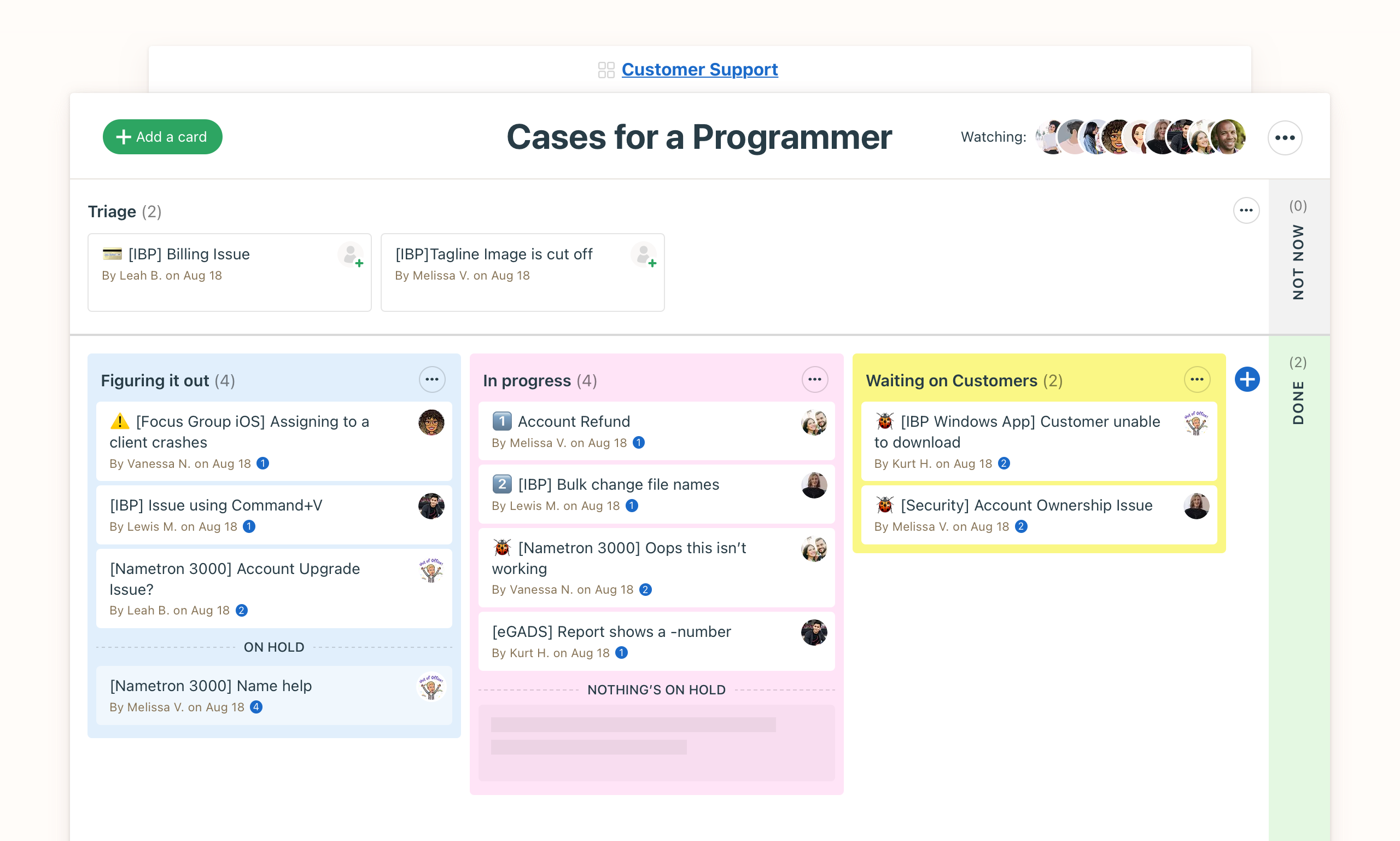
Consider the case of Basecamp, a project management software company. In 2018, they made the bold move of eliminating their free plan entirely. Instead of seeing a drop in users, they experienced faster growth. By focusing on customers who valued their product enough to pay for it, they were able to improve their offering, provide better support, and ultimately grow their business more sustainably.
Free plans attract people who are not serious about using the product. They attract tire kickers. We'd rather have fewer people who are paying and serious than more people who are free and not serious.
Jason Fried, Basecamp's CEO
Implementing a Reverse Freemium model requires courage and confidence in your product’s value. While it may seem counterintuitive in a market flooded with free options, this approach can lead to a more focused, efficient, and ultimately successful business.
Remember, in the tech startups world, sometimes the boldest move is to go against the grain. By charging for your true value from the start, you’re not just building a customer base – you’re building a community of committed users who can fuel your growth for years to come.
3. Artificial Scarcity in the Digital Age

When digital products are often perceived as infinitely available, creating a sense of scarcity can be a powerful growth driver for tech startups. This counterintuitive strategy can generate buzz, increase perceived value, and drive rapid adoption.
Creating FOMO in a world of unlimited digital products
The Fear of Missing Out (FOMO) is a potent psychological trigger. In the digital realm, where scarcity is rarely natural, artificial scarcity can create this sense of urgency and exclusivity. This can be achieved through:
Limited-time offers or features: Launch special features or discounts that are only available for a short period. For example, a SaaS tool might offer a lifetime deal for early adopters.
Invite-only access: Create an exclusive community by requiring invitations to join. This technique was famously used by Gmail in its early days to create buzz.
Capped user numbers: Set a limit on the number of users who can access your product or a specific feature. For instance, a new social platform might limit its initial user base to 10,000 members.
Gradual feature rollouts: Instead of launching all features at once, release them slowly over time to maintain interest. Clubhouse used this approach by gradually introducing new room types and features.
Exclusive or early-access content: Offer premium content or features to a select group of users. For example, a learning platform might provide early access to new courses for its most engaged users.
Techniques for implementing scarcity ethically
While artificial scarcity can be effective, it’s crucial to implement it ethically to maintain trust and credibility:
Be transparent about your reasons for limiting access
Ensure the scarcity serves a purpose (e.g., managing server load, ensuring quality)
Deliver exceptional value to those who do gain access
Use scarcity to enhance the user experience, not just as a marketing ploy
Balance exclusivity with accessibility to avoid alienating potential users
Case study: A tech startup that grew through limited-time product launches

Consider the case of Superhuman, an email management tool. They created a waiting list of over 275,000 people by implementing an invite-only system and a premium price point. This approach allowed them to:
Generate buzz and anticipation around their product
Ensure a high-quality experience for early adopters
Create a sense of exclusivity that increased perceived value
Manage their growth and infrastructure scaling
Build a community of enthusiastic users who became product evangelists
By carefully managing access to their product, Superhuman was able to turn scarcity into a powerful growth engine, competing effectively against much larger email clients.
This strategy demonstrates that in the digital age we live in, where abundance is the norm, strategically implemented scarcity can be a key differentiator for tech startups looking to stand out in the market.
4. The "Analog Growth Hack": Offline Strategies for Online Businesses

Sometimes the most effective growth strategies for tech startups are surprisingly old-school. Let’s explore how going offline can supercharge your online business.
Why sometimes the best way to grow a tech business is offline
Cut through digital noise: In-person interactions stand out in a sea of online ads.
Build deeper connections: Face-to-face meetings foster trust and loyalty.
Reach untapped markets: Not everyone is online all the time.
Create memorable experiences: Physical events leave lasting impressions.
Unconventional offline marketing strategies for tech startups
Guerrilla marketing campaigns: Create buzz with unexpected public stunts or installations.
Pop-up demo spaces: Let potential users experience your product in person.
Sponsorship of niche events: Target your exact audience at industry gatherings.
Direct mail campaigns: Stand out with creative, personalized physical mailings.
Community workshops: Offer free training related to your product’s benefits.
Example: A mobile app that grew its user base through local events

Consider the case of Nextdoor, a hyperlocal social networking app. They grew their user base significantly by organizing and sponsoring local community events.
Key takeaways from Nextdoor’s strategy:
They identified local influencers (community leaders, active residents) and partnered with them.
Organized block parties and neighborhood clean-ups, providing a platform for the app to be useful in real-time.
Distributed physical “invitation postcards” for neighbors to invite each other to the app.
Sponsored local farmers markets and school events, setting up booths for app demos.
Empowered users to create and promote their own Nextdoor events, fueling organic growth.
Result: Nextdoor saw a 100% increase in user engagement in areas where they held events, and a 50% increase in new user sign-ups compared to areas without events.
 Actionable Tips
Actionable Tips
Identify offline spaces where your target users congregate.
Create an experience that showcases your product’s value in real-life scenarios.
Empower early adopters to become ambassadors for your product.
Measure the impact of offline activities on your online metrics to refine your strategy.
Don’t neglect the power of word-of-mouth; give people a reason to talk about your product.
Remember, the goal isn't to abandon digital strategies, but to complement them with high-impact offline tactics. By thinking beyond the screen, you can create memorable experiences that translate into real growth for your tech startup.
5. Open-Sourcing as a Growth Strategy

Tech startups typically guard their intellectual property fiercely. However, open-sourcing—freely sharing code—can paradoxically drive growth. Let’s examine this unconventional strategy.
The counterintuitive benefits of giving away your code
Community building: Attract developers who can become users, contributors, and evangelists.
Rapid improvement: Leverage collective intelligence to enhance your product faster.
Trust and transparency: Build credibility in a world where users are increasingly privacy-conscious.
Talent acquisition: Attract top developers who want to work on open-source projects.
Ecosystem development: Create a platform that others can build upon, increasing your product’s value.
How to build a business model around open-source software
Freemium model: Offer a free open-source version with paid premium features.
Hosted solutions: Provide easy-to-use, managed versions of your open-source software.
Enterprise support: Offer paid support, training, and customization for businesses.
Dual licensing: Use open-source for individuals, paid licenses for commercial use.
Open-core model: Keep core functionality open-source, sell proprietary add-ons.
Case study: A startup that grew by open-sourcing its core product
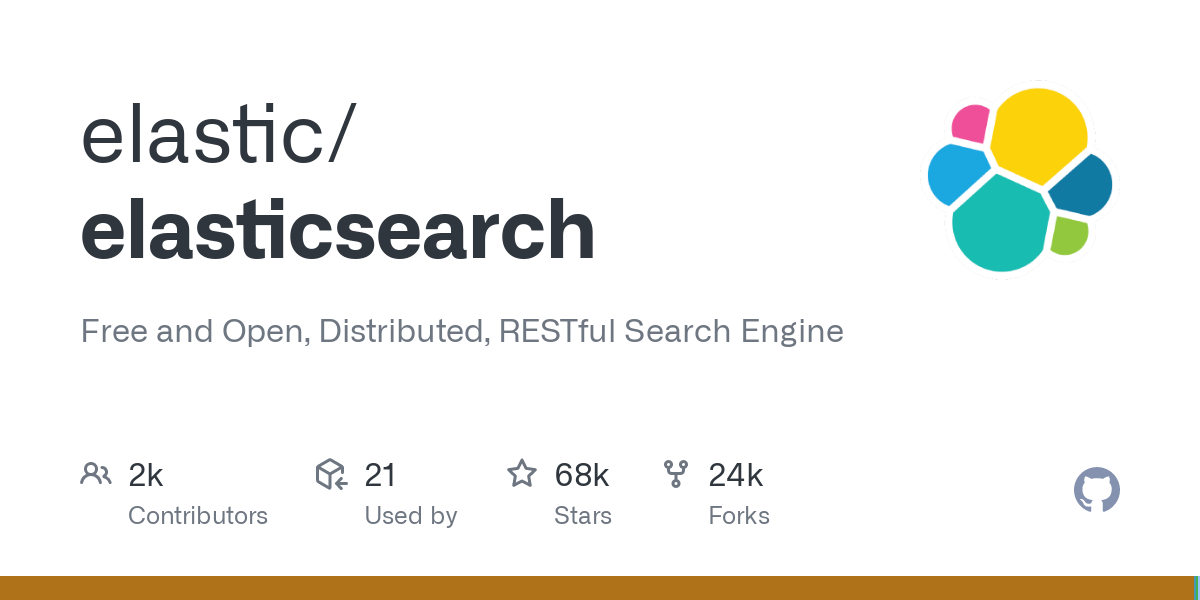
Let’s look at Elastic, the company behind Elasticsearch. They open-sourced their core search and analytics engine, which led to:
Rapid adoption: Developers could try and integrate Elasticsearch easily, leading to viral growth.
Community contributions: The open-source community helped improve and debug the product.
Ecosystem expansion: Third-party developers built tools and integrations around Elasticsearch.
Business model evolution: Elastic offers cloud-hosted solutions and premium features on top of the open-source core.
Result: Elastic went from a small startup to a publicly-traded company with a market cap of over $7 billion, largely thanks to its open-source strategy.
🎯 Key takeaways for startups considering open-source
Identify which parts of your technology can be open-sourced without compromising your competitive advantage.
Invest in community management to nurture and grow your open-source community.
Be clear about your business model from the start to avoid conflicts with the community later.
Use open-source as a marketing tool to showcase your technology’s capabilities.
Balance between community needs and business goals to maintain a sustainable open-source strategy.
Remember, open-sourcing isn't just about altruism; it's a strategic move that can accelerate your startup's growth by leveraging the power of community and collaboration. When done right, it can transform your startup from a small player to a dominant force in your industry.
6. Strategic Platform Independence: A Path to Sustainable Growth

In 2024, as major platforms continue to dominate the digital landscape, some startups are finding success by prioritizing platform independence. This strategy, which gained traction in the early 2020s, remains relevant for businesses looking to maintain control, differentiate themselves, and build direct relationships with their customers. Let’s explore how a strategic approach to platform independence can lead to growth and resilience in today’s tech ecosystem.
Why platform independence can drive sustainable growth:
Differentiation: Stand out in a crowded market with a unique, platform-agnostic solution.
Data control: Maintain full ownership of your user data and analytics.
Financial flexibility: Avoid platform fees and adapt your pricing model freely.
Direct customer relationships: Build stronger, unmediated connections with your user base.
Agility: Pivot or adapt your product without platform constraints.
Strategies for building a platform-independent tech business:
Develop a strong brand identity that resonates with your target audience across multiple channels.
Invest in owned marketing channels (e.g., SEO, email marketing, content marketing).
Create a seamless, platform-agnostic user experience.
Leverage decentralized technologies (e.g., blockchain, Web3) where appropriate.
Build a community around your product to encourage word-of-mouth growth.
Offer unique features or services that platforms can’t easily replicate.
Case study: Proton's multi-platform privacy approach

Consider Proton (formerly ProtonMail), which has built a suite of privacy-focused services:
They offer end-to-end encrypted email, VPN, cloud storage, and calendar services.
Proton maintains apps on major platforms but emphasizes browser-based access.
They’ve built a strong brand around privacy and platform independence.
By 2024, Proton has grown to over 70 million users globally.
Result: Proton’s focus on privacy and platform independence has allowed them to build a loyal user base and expand their services, even as major tech platforms face increasing scrutiny over data practices.
🎯 Key considerations for startups evaluating platform independence
Assess your product’s reliance on platform-specific features or ecosystems.
Develop a strong value proposition that transcends individual platforms.
Plan for increased investment in marketing and user acquisition across multiple channels.
Create a narrative around data ownership and user empowerment.
Ensure your product offers enough value to overcome the convenience of platform integration.
Consider a hybrid approach, maintaining platform presence while building independent channels.
While major platforms offer exposure and easy distribution, they also pose risks and limitations. In 2024, startups should balance platform presence with independent growth strategies to build resilient, adaptable businesses that can thrive amid change.
7. Hyperpersonalization at Scale

Hyperpersonalization stands out as a powerful strategy for tech startups to gain a competitive edge. This approach leverages Artificial Intelligence (AI) and Machine Learning (ML) – technologies that enable computers to learn from data and make decisions or predictions – to deliver individualized experiences at scale. Let’s explore how even small companies can use these advanced tools to create uniquely tailored user experiences.
Using AI and machine learning for individual-level customization:
• Predictive analytics: Anticipate user needs based on behavioral patterns. For example, a fitness app might suggest workouts based on a user’s past activity and goals.
• Dynamic content generation: Create personalized content in real-time. This could be a news app that curates articles based on reading history and preferences.
• Adaptive user interfaces: Modify app interfaces based on individual usage habits. An example is a productivity tool that rearranges features based on how frequently a user accesses them.
• Personalized recommendations: Offer tailored product or content suggestions. Think of how Netflix recommends shows based on viewing history.
• Sentiment analysis: Adjust interactions based on user mood and context. A customer service chatbot might change its tone based on the emotional content of user messages.
Implementing hyperpersonalization without breaking the bank:
• Start small: Focus on one key area of your product for initial personalization efforts. For instance, begin with personalizing email subject lines before tackling in-app content.
• Leverage open-source tools: Utilize free or low-cost AI and ML libraries like TensorFlow or scikit-learn.
• Use cloud-based AI services: Take advantage of pay-as-you-go models from major providers like AWS SageMaker or Google Cloud AI.
• Implement progressive personalization: Build features incrementally as you gather more data. Start with basic personalization (e.g., using names in emails) and progress to more complex features.
• Prioritize data collection: Focus on gathering high-quality, relevant user data from the start. Ensure you’re collecting data that will be truly useful for personalization.
🛠️ Popular AI/ML Tools for Startups:
TensorFlow: Open-source library for machine learning
PyTorch: Open-source machine learning library
IBM Watson: Suite of AI-powered tools
Azure Machine Learning: Microsoft’s cloud-based ML platform
H2O.ai: Open-source machine learning platform
RapidMiner: Data science platform with AI capabilities
It’s crucial to note that while hyperpersonalization can greatly enhance user experience, it must be implemented with careful consideration of privacy regulations like GDPR and CCPA. Ensure transparent data practices, obtain necessary consents, and provide users with control over their data and personalization settings.
Case study: A small AI startup that outcompeted giants with personalization

Let’s look at the success story of Prose, a custom hair care startup:
Prose uses AI to create highly personalized hair care formulas based on individual customer data.
They collect over 85 data points per customer, including hair type, lifestyle, and environmental factors.
Their AI analyzes this data to create unique formulations from over 50 billion possible combinations.
Despite being a small startup, they’ve competed effectively against beauty industry giants.
By 2024, Prose has grown to serve millions of customers, with a high retention rate due to their personalized approach.
Result: Prose’s hyperpersonalization strategy allowed them to carve out a significant market share in the crowded beauty industry, competing with established brands like L’Oreal and Procter & Gamble. They achieved this with a relatively small team, focusing on leveraging AI to deliver a truly personalized product.
🎯 Key takeaways for startups implementing hyperpersonalization
Focus on solving a specific problem with personalization, rather than trying to personalize everything at once.
Ensure transparency in data usage to build trust with users.
Continuously refine your AI models based on user feedback and behavior.
Balance automation with human oversight to catch and correct AI mistakes.
Use personalization to enhance, not replace, the core value of your product.
Hyperpersonalization aims to create superior user experiences, not just showcase technology. When implemented effectively, it enables startups to compete with larger companies by delivering exceptional value to users.
8. The "Slow Tech" Movement: Quality Over Speed

In the race to be the fastest, biggest, and most disruptive, many tech startups burn out. But what if slowing down could actually speed up your success? Welcome to the counterintuitive world of “Slow Tech.”
The Tortoise and the Unicorn Remember the fable? In the startup world, unicorns are often seen as the hares – fast, flashy, and attention-grabbing. But more and more, we’re seeing tortoises win the race. These are the startups that prioritize sustainable growth, ethical practices, and long-term value over breakneck scaling.
“Move slow and fix things” – The new Silicon Valley mantra?
Key Principles of the Slow Tech Movement:
Sustainable Growth: Prioritize steady, profitable growth over rapid, unsustainable scaling.
Ethical Development: Consider the long-term impacts of your technology on society and individuals.
Quality First: Focus on building robust, reliable products rather than rushing to market.
Work-Life Balance: Cultivate a culture that values employee wellbeing and prevents burnout.
Customer-Centric: Take the time to truly understand and address user needs.
Implementing Slow Tech in Your Startup:
Set realistic growth targets that don’t sacrifice product quality or team wellbeing.
Invest time in thorough testing and refinement before launching new features.
Create a culture of reflection and learning from both successes and failures.
Prioritize building lasting customer relationships over quick acquisition tactics.
Consider the ethical implications of your technology and make responsible choices.
Case Study: Basecamp's Deliberate Pace

Basecamp, a project management software company, has become the poster child for the Slow Tech movement. Their approach:
Rejected VC funding to maintain control over their growth pace
Stick to a 40-hour work week, even during product launches
Focus on one core product instead of diversifying rapidly
Transparent communication about their business practices
Result? A profitable company with a loyal customer base and a team that’s been together for over a decade.
"In a world obsessed with speed, the ability to slow down can be a superpower."
- Anonymous Tech Founder
The Slow Tech Advantage:
Higher quality products lead to better customer retention
Reduced employee burnout results in more innovation over time
Building trust through ethical practices can be a key differentiator
Sustainable growth often leads to more stable, profitable businesses
Embracing Slow Tech doesn't mean becoming complacent. It's about moving forward with intention, focusing on what truly matters, and building a business that can stand the test of time.
9. Radical Transparency in Tech: Turning Openness into a Competitive Edge
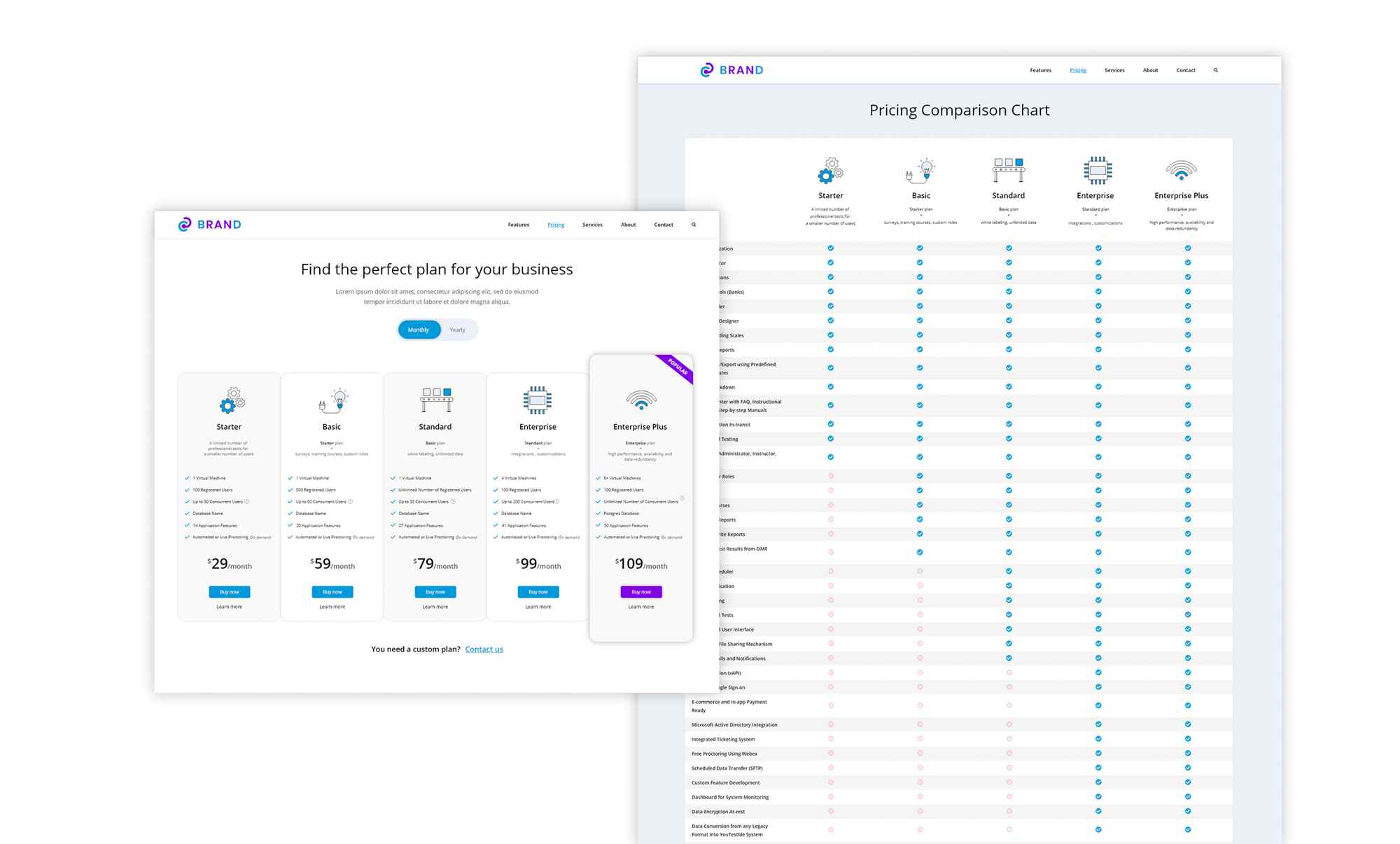
In an era of data breaches and privacy concerns, radical transparency might seem counterintuitive. But for some tech startups, it’s becoming a powerful differentiator. Let’s dive into how being radically open can drive growth.
The Transparency Paradox: The more you reveal, the more customers trust you. The more they trust you, the more likely they are to choose your product. It’s a virtuous cycle that flies in the face of traditional business secrecy.
Key Areas for Radical Transparency:
Product Development: Share your roadmap and involve users in decision-making.
Pricing: Break down costs and explain your pricing structure.
Data Usage: Be crystal clear about how you collect and use customer data.
Company Culture: Showcase your team, values, and even internal challenges.
Financials: Consider sharing revenue figures or even salary information.
Case Study: Buffer's Open Playbook
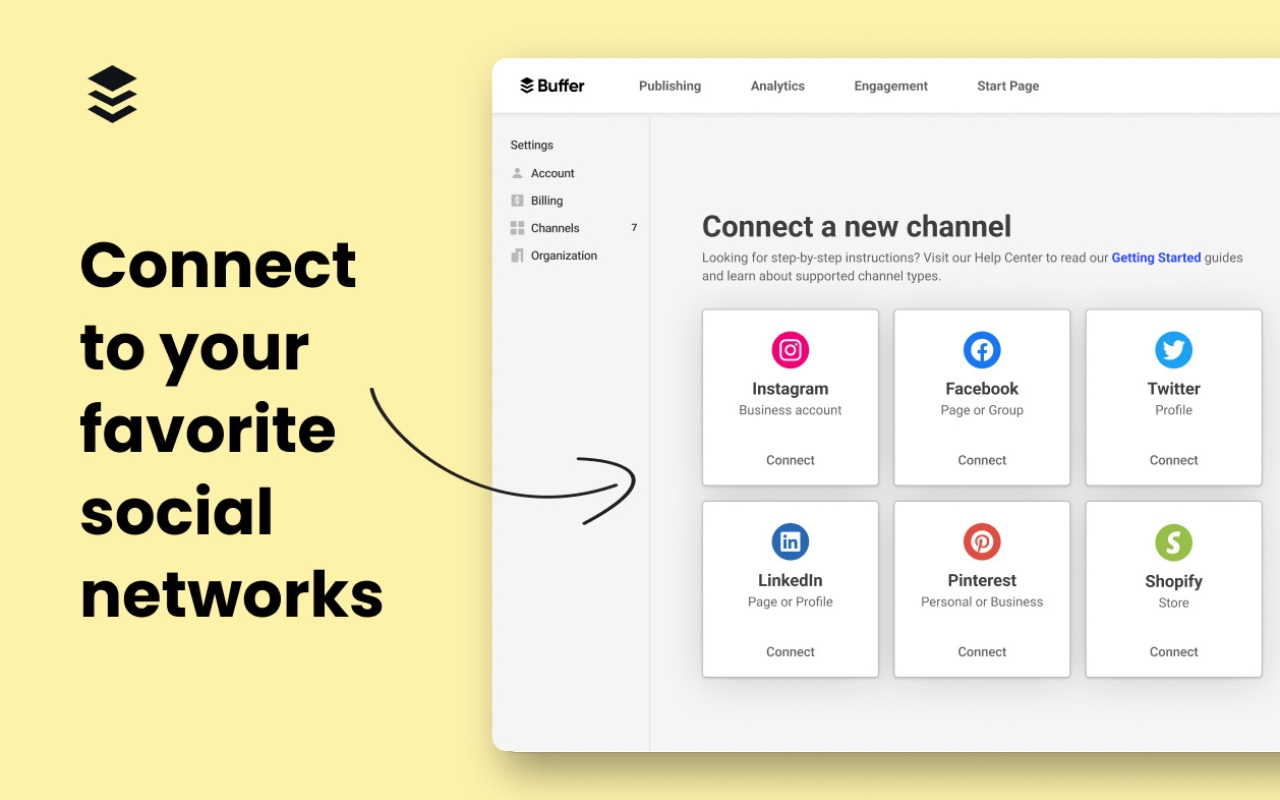
Buffer, a social media management platform, took transparency to new heights:
Published all employee salaries, including the CEO’s
Shared their equity structure and revenue numbers publicly
Made their product roadmap accessible to all users
Openly discussed company challenges and failures
Result: Buffer’s approach led to increased user trust, higher employee satisfaction, and steady growth in a competitive market.
Implementing Radical Transparency:
Start Small: Choose one area to be more transparent about and gauge the response.
Be Consistent: Once you commit to transparency, stick with it even when it’s uncomfortable.
Engage Your Team: Ensure your employees are comfortable with the level of transparency.
Use Multiple Channels: Share information through your blog, social media, and product interface.
Invite Feedback: Make transparency a two-way street by actively seeking user input.
Potential Pitfalls to Watch Out For:
Oversharing sensitive information that could benefit competitors
Overwhelming users with too much information
Creating anxiety among employees who aren’t used to such openness
🛠️ The Transparency Toolkit:
Open-source parts of your codebase
Publish a public changelog
Host AMAs (Ask Me Anything) sessions with your leadership team
Create a transparent pricing calculator
Share your company’s diversity and inclusion data
Remember: Radical transparency isn't about airing all your dirty laundry. It's about strategically sharing information that builds trust, engages your community, and sets you apart in the market.
10. The "Reverse Acquisition" Strategy: Small Fish Eating Big Fish

In the tech startup world, the endgame is often seen as getting acquired by a larger company. But what if we flipped the script? Enter the “Reverse Acquisition” strategy, where smaller, nimbler companies acquire larger, established ones to fuel explosive growth.
Why Reverse Acquisitions can drive rapid growth:
Instant scale and resources: Gain immediate access to a larger customer base and infrastructure.
Established revenue streams: Acquire a proven business model and steady cash flow.
Innovation injection: Infuse startup agility and fresh ideas into established operations.
Market positioning: Quickly establish a dominant position in your industry.
Talent acquisition: Gain access to experienced teams and industry expertise.
Implementing a Reverse Acquisition strategy:
Identify potential targets: Look for larger companies struggling with innovation or market adaptation.
Secure funding: Explore creative financing options, including VC backing or strategic partnerships.
Conduct thorough due diligence: Focus on cultural fit, synergies, and potential integration challenges.
Develop an integration plan: Outline how to preserve your startup’s innovative edge while leveraging the acquired company’s resources.
Communicate transparently: Ensure clear, open communication with both teams throughout the process.
Case Study: Taboola's acquisition of Outbrain

In 2024, Taboola, a smaller but rapidly growing content recommendation platform, successfully acquired its larger rival, Outbrain:
Taboola, valued at $2.6 billion, acquired Outbrain, valued at $1.1 billion.
The merger created a content recommendation powerhouse, better positioned to compete with tech giants like Google and Facebook.
Taboola’s innovative AI-driven approach was applied to Outbrain’s extensive publisher network.
The combined company saw a 30% increase in revenue within the first year post-acquisition.
Result: This reverse acquisition allowed Taboola to dramatically expand its market share, enhance its technological capabilities, and establish itself as a dominant player in the digital advertising space.
🎯 Key takeaways for startups considering reverse acquisitions:
Prioritize cultural integration to avoid talent exodus.
Be prepared for increased complexity in operations and management.
Focus on quick wins to demonstrate the value of the acquisition.
Maintain your startup agility while scaling operations.
Be mindful of potential regulatory scrutiny, especially in tech sectors.
Did you know?
In 2023, 15% of tech acquisitions were "reverse acquisitions," where the acquiring company had a lower market cap than the acquired company. This trend has grown by 5% annually since 2020.
A reverse acquisition isn't just about getting bigger—it's about strategically accelerating your growth trajectory by acquiring complementary assets and expertise. While bold, this strategy can catapult your startup to new heights when executed thoughtfully.
Forging Your Own Path to Growth
We’ve explored ten unconventional strategies that challenge the status quo for tech startups. The key takeaway? There’s no universal formula for success. Your path forward will likely involve creatively adapting and combining approaches to fit your unique vision and circumstances.
A few core principles to keep in mind:
Question assumptions about “how things are done” in your industry
Use your agility and fresh perspective as competitive advantages
Focus relentlessly on creating real value for users
Build authentic connections with your community
Think long-term and prioritize sustainable growth
The most successful startups aren’t afraid to experiment and chart their own course. As you move forward, consider how these ideas might apply to your specific situation. Mix, match, and iterate to find what works for you.
Now it’s time to take action. Go forth and grow boldly, on your own terms. The tech world is waiting for fresh ideas and approaches – show them what you’ve got! 🔥
Share :
Read More
10 Growth Marketing Strategies for Scaling Your Business in 2025
Discover 10 cutting-edge growth marketing strategies to scale your business in 2025. From leveraging AI and programmatic SEO to harnessing the power of podcasts and community-led tactics, learn how top companies are driving transformational growth. This guide explores proven methods for sustainable traffic growth, maximizing brand visibility, personalizing user experiences, and overcoming key B2B SaaS challenges. Unlock the secrets to balancing performance marketing with brand building and creating scalable growth through strategic content and sales assets.
How to Choose the Right Product Design Agency for Your Project
Choosing the right product design agency is crucial for your project’s success. This guide explores key factors to consider, including agency experience, portfolio quality, design process, collaboration skills, and technical expertise. Learn how to evaluate costs, check references, and make an informed decision to find the perfect partner for bringing your digital product vision to life. Discover the essential steps to selecting a product design agency that aligns with your goals and delivers innovative solutions.
Digital Product Design Trends for 2025
Discover the cutting-edge digital product design trends shaping 2025. From hyper-realistic 3D and AR to biophilic elements and AI-generated designs, explore how these innovations will transform user experiences and redefine digital interactions.

